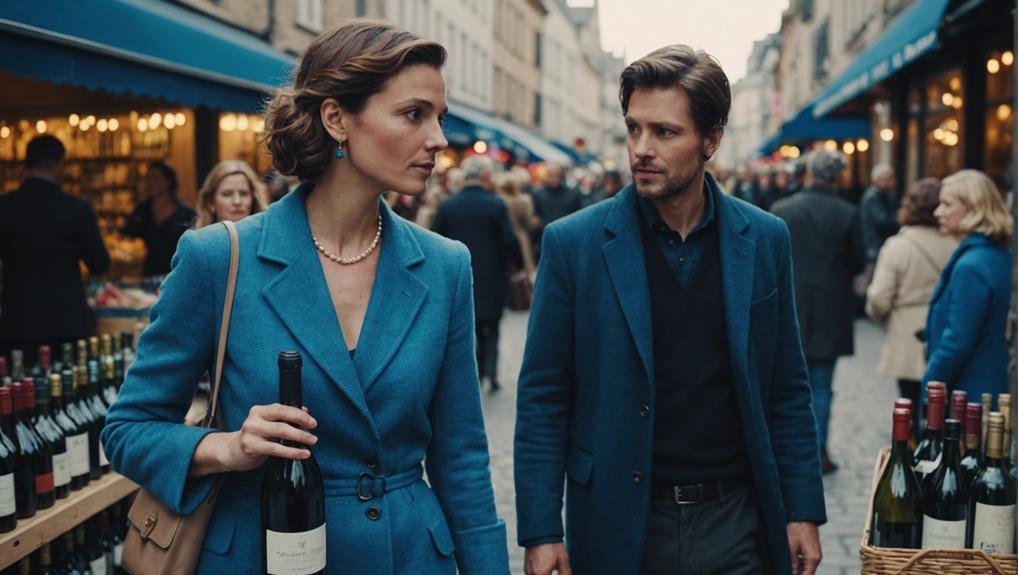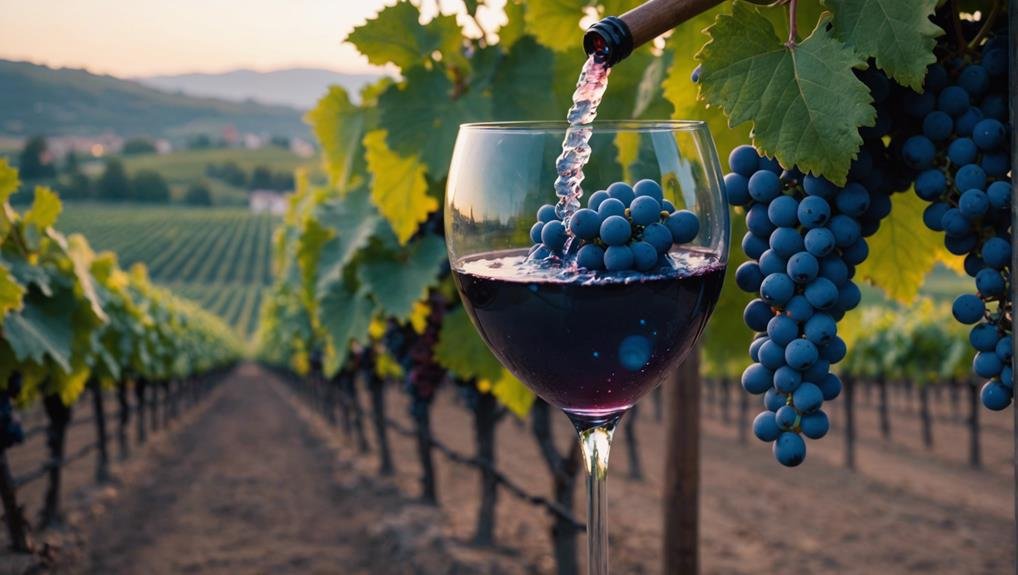Unconventional blue wines like Gik and Blanc de Bleu Cuvee Mousseux are changing the wine industry with their unique colors and flavors. These wines get their bright blue hues from natural ingredients like indigo and blueberry extract, sparking interest among adventurous drinkers.
Traditional wines offer complex flavors shaped by the type of grape and growing conditions. In contrast, blue wines are sweeter and visually striking. This difference appeals to younger consumers who are looking for something new and different.
The market response has been very positive, with many people eager to try these eye-catching wines. As blue wines become more popular, they are setting new trends and challenging the usual wine norms.
This shift is opening up exciting possibilities in the wine world, making it an interesting topic to explore further.
The Rise of Blue Wines
In recent years, blue wines like Gik and Blanc de Bleu Cuvee Mousseux have shaken up the traditional wine scene with their vibrant and unconventional colors. These wines offer unique flavors and are made using distinct methods. For example, Gik uses natural ingredients like grape skins and indigo to achieve its striking blue hue. This unique appearance intrigues many consumers.
However, reactions to blue wine are mixed. Some people are curious and excited to try something new, while others are skeptical. Cultural influences also affect how blue wines are received. In some places, people embrace these unusual colors, while in others, they're viewed with suspicion.
Despite the mixed reactions, blue wines are finding their own niche. They challenge our ideas about what wine can be and offer a fresh experience for adventurous drinkers.
Ingredients Behind the Color
The vibrant blue color of these wines comes from natural ingredients like indigotin and blueberry extract. These additives are chosen for their ability to provide a striking blue hue without affecting the wine's taste or quality.
Indigotin, a dye derived from plants, is often used in food coloring. Blueberry extract not only enhances the color but also adds subtle fruity notes to the wine. The extraction process ensures these ingredients blend seamlessly into the wine, keeping the flavor balanced.
Market Response to Blue Wines

Wine enthusiasts and casual drinkers alike have shown an enthusiastic response to the introduction of blue wines. This interest reflects changing consumer preferences, focusing on novelty and visual appeal. Blue wines stand out in a market filled with traditional reds and whites, attracting younger, adventurous drinkers. This trend has significantly impacted the industry, with wineries now exploring more unconventional offerings. Retailers are also expanding their shelves to meet this new demand.
Blue wines are sparking conversations about what defines wine, pushing boundaries, and challenging established industry norms. For example, brands like Gik Live! and Vindigo have gained popularity with their vibrant blue wines. These products not only provide a unique drinking experience but also look great on social media, further driving their appeal. As a result, more wineries are experimenting with colors and flavors to capture the interest of modern consumers.
Comparing Traditional and Blue Wines
Traditional wines come in familiar colors like red, white, and rosé, and follow established methods of production. They offer complex flavors influenced by grape variety and terroir.
Blue wines, however, stand out with their bright color, achieved through natural pigments like indigotin and blueberry extract. Their taste is often sweeter and more approachable, making them appealing to a younger audience or wine newcomers.
This difference in approach invites us to rethink our wine expectations. Traditional wines offer a rich, nuanced experience, while blue wines break norms with their vibrant appearance and accessible taste.
For example, you might try a classic Cabernet Sauvignon for its deep, layered flavors, or a blue wine like Gïk for its unique color and sweet profile. Both types of wine provide distinct experiences, encouraging us to explore and expand our palate.
Future of Unconventional Wine Colors

Looking ahead, unconventional wine colors like blue and green could change how we appreciate and produce wine. Innovative packaging is making these unique wines stand out on store shelves. Besides their looks, their environmental impact is crucial. More wineries are adopting green practices like organic farming and renewable energy. This trend matches the growing consumer demand for eco-friendly products. By embracing these unconventional wine colors, we support responsible production methods, ensuring a vibrant and sustainable future for the wine industry.
For example, brands like Gïk Live! and Vindigo are already making waves with their blue wines. These wines not only catch the eye but are also produced with an emphasis on sustainability. Gïk Live! uses organic grapes and Vindigo filters their wine through grape skin, which gives it a natural blue hue. This combination of visual appeal and eco-friendly production is setting a new standard in the wine industry.
As we adopt these new wine varieties, the shift towards sustainable practices becomes more pronounced. It's not just about enjoying a glass of wine; it's about making choices that support a healthier planet. So next time you see a bottle of blue or green wine, consider it a small step towards a brighter, greener future for us all.
Conclusion
As wine lovers, we might be unsure about trying blue wines at first. We wonder if they're real and tasty. But these colorful wines use natural ingredients and have unique flavors. They add a new experience to our wine tasting.
By trying blue wines, we open ourselves to new ideas and challenge old traditions. Let's be open-minded and enjoy this exciting new option in the wine world. It brings innovation and variety to our favorite drink.
For example, brands like Gïk and Vindigo offer blue wines made from a blend of red and white grapes, with natural pigments from grape skins and berries. These wines have a light, fruity taste that pairs well with seafood and light salads.
By exploring these options, we can see how creativity and tradition can come together in a refreshing way.